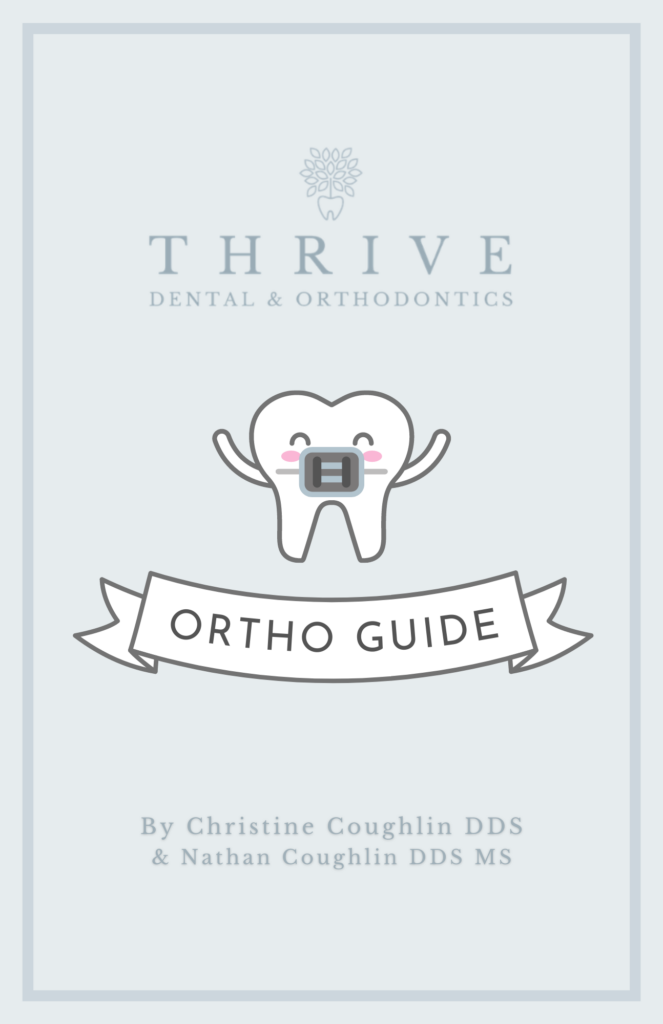Ceramic braces (aka clear braces) are a more aesthetic than traditional metal braces.
They are more discreet and blend more with your teeth than metal braces.
In this post, I’ll discuss the pros and cons of each type of braces, the costs, and what to expect.
What are Ceramic Braces?
Ceramic braces are similar to traditional metal braces, but the brackets are made of clear or tooth-colored composite.
Benefits of Ceramic Braces
Ceramic braces are great for adults or anyone concerned about aesthetics.
They are a great option if you’re looking for something more discreet and natural. The brackets used are clear and blend in with your teeth.
How Long is Ceramic Braces Treatment?
Ceramic braces have the same treatment time as metal braces (around 18-24 months)
Cons of Ceramic Braces
The disadvantages of ceramic braces include:
- they more expensive than traditional braces
- they’re not an option for severe malocclusions
- they’re not as strong as metal braces (can break more easily)
- they are difficult to remove
Because of their light color, ceramic braces are more difficult to keep clean and free of stains.
As with any orthodontic treatment, it’s crucial to practice great oral hygiene care with ceramic and metal braces. Not doing so can lead to decalcification (white scars on the teeth) and gum inflammation.
Cost of Ceramic Braces
Because ceramic braces are considered a cosmetic upgrade, they are more expensive than traditional braces. Your insurance doesn’t cover this upgrade, so this can mean more money out of pocket.
Removal Procedure for Ceramic Braces
The removal procedure for ceramic brace is quite a bit more difficult than metal braces.
Whereas metal braces come off with ease, the removal of ceramic braces involves a lot of force and loud popping.
You may find it a little alarming if you’re not expecting it. But rest assured, your orthodontist will use great care during the removal process
Should I get Metal or Ceramic Braces?
You decide what kind of braces to get. Traditional metal braces are much more cost-effective than ceramic braces and easier to remove once treatment is complete.
Costs & Insurance Coverage
The cost of ceramic braces ranges from $4,000-$8,000.
Most dental insurance companies cover orthodontic treatment at 50%, with a lifetime maximum of $1,500.
Metal Braces
These are the quintessential types of braces that everyone knows. Metal braces use metal brackets attached to the front of the teeth. An archwire guides the teeth and slowly aligns the bite.
- Pros
- least expensive
- fast results
- powerful movement
- variety of color choices
- Cons
- can cause significant discomfort
- most noticeable type of orthodontic appliances
- white spots can develop around the brackets with poor oral hygiene care.
Ceramic braces are a great option if you’re looking for something more discreet and natural. The brackets are made of a composite material that is clear and blend in with your teeth.
However, they are about $1,000 more expensive for total treatment than metal braces. They are also more difficult to prevent staining and break more easily than traditional braces. And they are more difficult to remove when treatment is complete.
Conclusion
To summarize, braces can greatly improve oral health and confidence, whether you are looking for affordable orthodontic treatment or a more esthetic option to straighten your teeth. If you want to find out what braces are right for you, come in anytime for a FREE orthodontic consultation.




